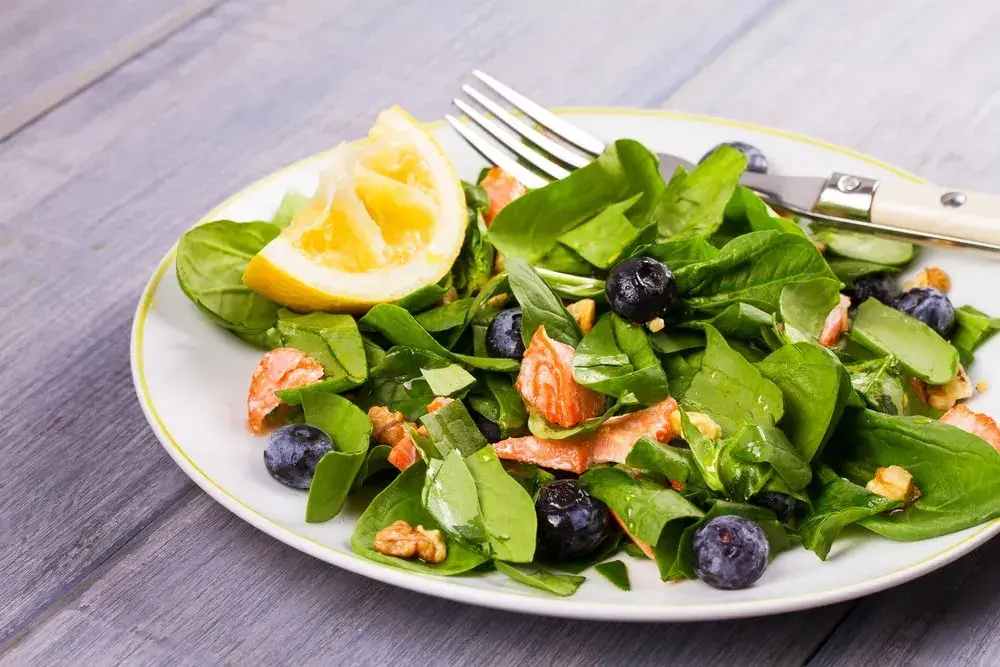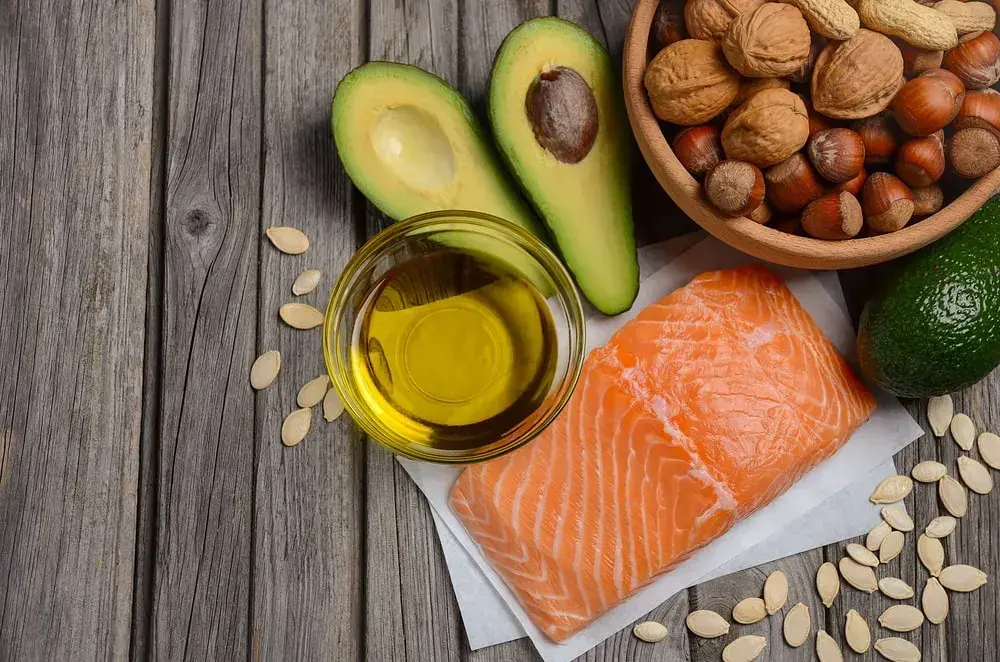
/assets/images/provider/photos/2578708.jpg)
The good news is that many risk factors for heart disease are related to lifestyle and diet — meaning that you can reduce your risk with the right healthy habits. You can probably guess what many of these factors are: maintain a healthy weight, get regular exercise, don’t smoke, lower your blood pressure and cholesterol, and eat a healthy diet. We’ve put together a list of the best diets for heart health, according to health experts.
Heart disease is the #1 cause of death for most ethnic groups in the United States, and the standard American diet — based on highly processed, conveniently packaged, high-sodium food — is a major contributing factor. The Centers for Disease Control and Prevention (CDC) has found that heart disease is responsible for approximately 610,000 deaths every year — about one out of every four deaths. Here are the top diet plans you should eat if you want to reduce your risk of heart disease.
Mediterranean Diet
The Mediterranean region is renowned for its fabulous food. The climate is ideal for growing fresh vegetables year-round, and the region has access to abundant sources of seafood. These locally grown, whole foods naturally lend themselves to a diet that offers a multitude of health benefits. There’s no need to hop on a plane to reap the benefits, though; just visit your local grocer. The Mediterranean diet plan is based on the consumption of fruit, vegetables, whole grains, and legumes, with moderate intake of white meat and seafood. Red meat intake is very limited. To flavor their food, cooks use heavy doses of herbs and healthy fats, but very little sodium.
Anti-Inflammatory Diet
The anti-inflammatory diet is a perfect choice to counteract the effects of the preservative-ridden foods that we typically consume. This diet is helpful for everyone, not only those with heart problems or inflammatory diseases. Like the other diets on this list, the basis for an anti-inflammatory diet plan is fresh fruit and vegetables. Healthy proteins are added in the form of beans, grains, and seafood. Nuts are also encouraged, but only in moderation.
The biggest no-no for this diet is processed sugar, which is known to be an inflammatory substance. Other inflammatory foods to watch out for include processed foods, red meat, fried foods, butter, and dairy. Non-fat and low-fat dairy items are not recommended, as they typically contain excess sugar.
Volumetrics Diet
The intent of the Volumetrics Diet is to help you feel full and avoid feelings of deprivation. The creator of the diet, Dr. Barbara Rolls, claims that many people actually consume more food on this diet than they normally would, because they are eating more low-energy-density foods. Foods with low energy density are those that provide fewer calories but have a higher volume, such as fruit and non-starchy vegetables.
The Volumetrics Diet allows you to eat whatever you want, as long as you pay attention to energy density. Low-energy-density foods can be eaten freely, because they help fill you up without adding a lot of calories. Foods with high energy density, which are higher in calories, can be eaten only sparingly. The program works by allowing people to eat their favorite foods in moderation, feel full, and avoid feelings of deprivation that could lead to binging.
Mayo Clinic Diet
The Mayo Clinic diet comes from a well-trusted resource, so those looking to lose weight can feel good about the accuracy of the research involved. The plan is designed to be a lifestyle change, not a temporary approach to weight loss. The two main phases are called the Lose It! phase, lasting two weeks, and the Live It! phase, which creates a sustainable lifestyle of healthy diet and exercise. The Mayo Clinic provides a food pyramid that outlines the amount of each food group to be eaten daily. Fresh fruits and vegetables make up the largest percentage of the pyramid, followed by healthy carbohydrates, and then protein. The smallest sections of the pyramid are fats and sweets. In conjunction with the diet plan, users are encouraged to begin or increase physical activity.
Vegetarian Diet
Vegetarian diets are no longer just for a select few. The health benefits of a vegetarian diet have been well documented and include a lower risk of cardiac events such as a heart attack. The important thing to remember is that a healthy vegetarian diet consists of a wide variety of whole plant foods, such as fruits, vegetables, whole grains, beans, nuts, and seeds. Dairy and animal products such as eggs and cheese are allowed. If you would like to keep the benefits of fish in your diet, you can opt to be a pescatarian — a subgroup of vegetarians that allow consumption of fish. The advantages of a vegetarian diet are obvious: no heavy meats or greasy fats, as well as an increase in plant-based foods.
Vegan Diet
The vegan diet is very similar to the vegetarian diet, except for the consumption of animal products. Vegans follow a vegetarian diet, but also omit any products derived from animals, such as dairy, eggs, honey, and animal-based fats. Vegan diets can be extremely healthy, as long as the focus is on whole foods, not processed foods such as chips and cookies. It’s also important to be careful with soy products, which are often marketed as meat and dairy substitutes. Although soy was once lauded as a health food, further studies on its purported health benefits have yielded conflicting results.
DASH Diet
The DASH diet (Dietary Approaches to Stop Hypertension) was created specifically to combat high blood pressure. The diet plan is based on the number of servings from different food groups. Another key element is the gradual reduction of sodium, which contributes heavily to hypertension in some people. The plan calls for seven to eight servings of whole grains a day. Vegetables and fruits follow behind with four to five servings, and then dairy products with two servings a day. Meat should be cut down to two servings or less each day, and should focus on lean sources such as lean protein such as chicken and fish.
MIND Diet
The MIND diet is fairly recent on the scene of heart-healthy plans. MIND stands for Mediterranean-DASH Intervention for Neurodegenerative Delay. The MIND diet combines elements of the DASH diet and the Mediterranean diet that specifically address brain health. This plan emphasizes 10 brain-healthy food groups: leafy greens, other vegetables, nuts, berries, beans, whole grains, fish, poultry, olive oil, and wine. Red meat consumption is cut down to fewer than four servings a week and dairy even less. Fried and fast foods are highly discouraged. The MIND diet was developed specifically to lower the risk of Alzheimer’s disease, but is also extremely heart-healthy.
TLC Diet
The TLC (Therapeutic Lifestyle Changes) plan is a cholesterol-lowering diet that concentrates on heavily limiting fat intake. Fat in the form of meat, eggs, dairy, and oils is limited. The diet primarily comprises fruit, vegetables, and healthy carbohydrates. Sweets are permitted every so often in small portions. Physical activity is recommended at least 30 minutes a day. The TLC plan has been shown to be extremely effective in treating high cholesterol levels, one of the leading causes of heart disease.
Ornish Diet
The Ornish diet plan claims that it changes your body at the cellular level, and can potentially reverse heart disease, diabetes, and prostate cancer. The mainstay of this diet is eating fruits and vegetables in their natural form and abstaining from meat. Sugar and alcohol are heavily discouraged. Four grams of good fat, such as fish oil, flaxseed oil, and nuts are consumed daily. Cholesterol intake should be limited to 10 milligrams or less per day. Supplements are also encouraged, to round out the diet.
Make it all about you
While the diets listed above differ somewhat in their approach, you may notice they all have some things in common: an emphasis on consuming fresh, whole foods and increasing exercise. Maybe one of them appeals to you more than others, or maybe you can pull elements from different plans and create a way of eating that works for you. Ask yourself what makes the most sense for you. Can you go without meat? Do you want to make drastic changes now or go through phases?
At Garcia Weight Loss and Wellness Centers, we work with each of our patients to help create a personalized weight-loss plan that works for you. We evaluate your medical history and lab results to formulate a program that unlocks your individual potential. As a patient at one of Dr. Garcia’s Weight Loss and Wellness Centers, you can expect a comfortable atmosphere and supportive staff dedicated to helping you reach your goals with encouragement, education, and inspiring patient care. Contact us today for your no-cost consultation!


